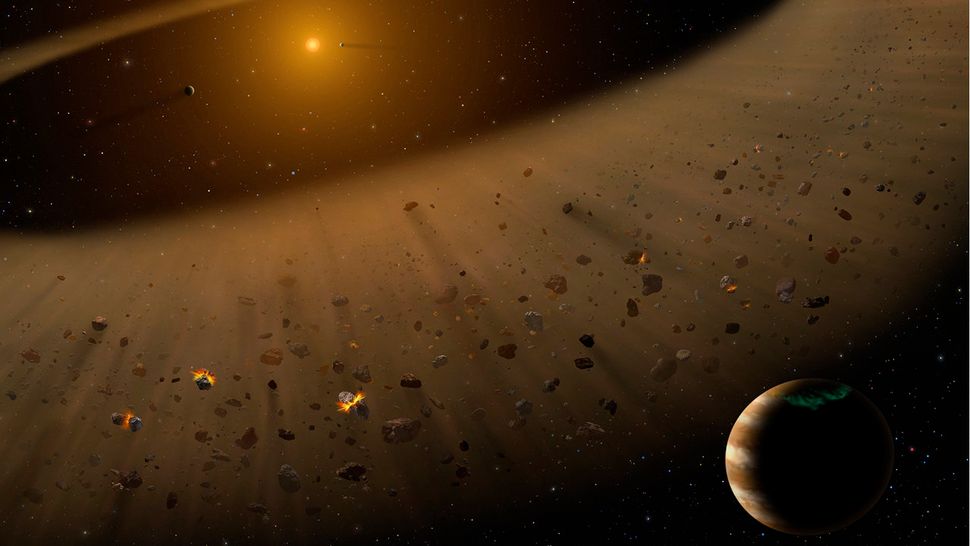Science
Related: About this forumOur solar system map may need an update -- the Kuiper belt could be way bigger
By Keith Cooper published about 7 hours ago
The Kuiper Belt could extend billions of miles farther than anyone thought.

An illustration of the Kuiper Belt. (Image credit: NASA/SOFIA/Lynette Cook)
NASA's New Horizons mission, which encountered Pluto in 2015 is now riding through the deepest depths of the Kuiper Belt, is encountering a cosmic dust storm that hints there may be more going on in the outermost reaches of the solar system than we imagine.
Space is filled with dust formed of tiny particles just microns — millionths of a meter — in size. Much of the dust in our solar system is leftover residue from the formation of the planets, which was a violent affair that saw a multitude of objects smash into one another. Today, this ancient dust is also joined by fresh dust sputtered off the surfaces of asteroids and comets by micrometeorite impacts. This dust content, both fresh and ancient, gives rise to the enigmatic "Zodiacal light." The dust extends into the farthest reaches of the solar system. Astronomers still are not entirely sure of the make-up of this final frontier.
The Kuiper Belt (or the Kuiper–Edgeworth Belt, named after astronomers Gerard Kuiper and Kenneth Edgeworth, who independently proposed its existence) is so far away, and its icy inhabitants are so small and faint, that it wasn't until 1992 that the first Kuiper Belt Object (KBO) beyond Pluto was discovered. That discovery was made by University of Hawaii astronomers Dave Jewitt and Jane Luu. But since then, thousands of KBOs have been spotted, and astronomers have tentatively been able to begin mapping the outer solar system.
Beyond the Kuiper Belt is the Scattered Disk, populated by KBOs that have been scattered from the Kuiper Belt by gravitational tides coming from the solar system's outermost planet, Neptune. Objects in the Scattered Disk tend to have highly elliptical orbits that are steeply inclined to the plane of the solar system and can go out to hundreds of AU's from the sun. One AU, or astronomical unit, is equal to the distance between Earth and the sun.
More:
https://www.space.com/solar-system-map-kuiper-belt-extended-new-horizons-nasa?utm_source=pushly&utm_campaign=MANUAL
twodogsbarking
(17,417 posts)Sympthsical
(10,829 posts)He said, very pedantically.
Not a criticism of OP. Space.com kind of has a history of just throwing random things around in their articles. I always get a kick out of spotting one.
lastlib
(27,391 posts)Planet? Kuiper Belt? Nah.....
Bad, space.com!
![]()
Easterncedar
(5,376 posts)Love it! Thanks